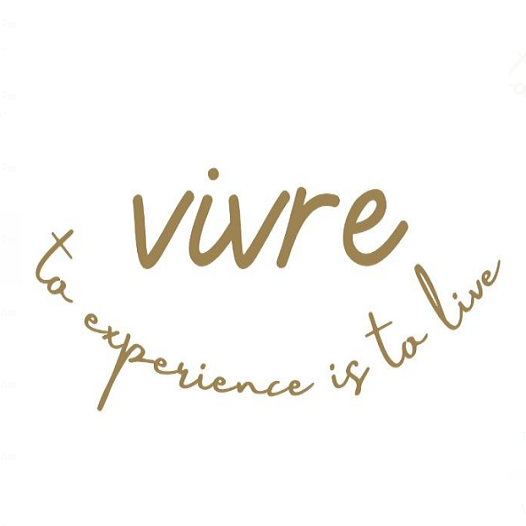
Sound Healing Therapy: Benefits, Techniques, and How It Works
One study published in the Journal of Evidence-Based Integrative Medicine found that a 60-minute sound bath dramatically reduces tension, anger, fatigue, and depression.
Sound healing isn't some newfangled trend; it's an ancient practice that carries profound modern-day relevance. Let's understand the world of sound healing, discover sound healing benefits, and see how this modality can work for your physical, emotional, and spiritual well-being.
What Is Sound Healing Therapy?
Sound healing therapy uses sound vibrations to improve mental, emotional, and physical health. It is different from traditional music therapy, which involves listening to or playing music. Sound healing focuses on specific frequencies and vibrations that resonate with the body.
It is like a "tune-up" for your mind and body. Just like musical instruments need to be in harmony with each other to create beautiful sounds, your body needs its energy in balance. Practitioners use sound frequencies to help restore this balance, promoting relaxation and healing.
The History of Sound Healing
Sound healing is anything but new; it's an ancient art with millennia of tradition behind it. Among the high points of its replete history are:
- Tibetan singing bowls are used in meditation and spiritual rituals of Buddhist practices.
- Gongs in ancient China allegedly cleared negative energy and restored vitality.
- Mantras and chants are integral to Indian Vedic traditions for the alignment of body and mind.
Pythagoras' Frequency Therapy: The ancient Greek philosopher prescribed music and vibrations to treat both mental and physical ailments.
This ancient practice is now popular in modern wellness circles, combining science and spirituality.
The Science Behind Sound Healing Therapy
Sound healing works by playing with the physical properties of sound waves. But how does it impact your body and mind?
Here's the science:
- Brainwave Entrainment: Sonic frequencies synchronize the brain to states including relaxation, such as alpha waves or deep meditation, with theta waves.
- Resonance and Vibrations: The human body is 60% water and thus conducts the vibrations very nicely. These vibrations reach into tissues to release tension and facilitate health.
- Parasympathetic Activation: There is a "rest and digest" response brought on by the sounds, antagonizing the effect of stress and anxiety.
Studies have proven that sound therapy can help lower cortisol levels (the stress hormone), reduce pain perception, and even improve focus and memory.
Techniques and Tools Used in Sound Healing Therapy
The use of a wide array of techniques and instruments in sound healing sets it apart; each having its own peculiar benefits. Every approach has its unique benefits, and you can choose the one that most suits you.
1. Singing Bowls
Singing bowls are synonymous with sound healing; they come in metals or crystals. Struck or played with a mallet, the bowls make deep, resounding sounds that seem to wash over you.
Types of Singing Bowls:
- Tibetan Singing Bowls: These are traditionally made from an alloy of metals and are commonly used for spiritual and therapeutic purposes.
- Crystal Singing Bowls: Made of quartz crystal, many are tuned to the exact frequencies of the chakras for ultimate energy alignment.
2. Tuning Forks
Tuning forks are those slender, metallic, two-pronged tools that, when struck, will ring a note. Practitioners may place tuning forks directly on the body or sound them near an acupressure point to stimulate healing.
For example, a practitioner can place a vibrating fork near your ear. Or maybe an acupressure point to stimulate healing.
3. Gongs
Gongs consist of complex, layered vibrations. If singing bowls are gentle waves, gongs are ocean tides: dynamic and immersive.
Popular Gong Practices:
- Gong Baths: Group sessions in which one lies down and is bathed in the sound waves of several gongs.
- Solo Gong Healing: One-on-one sessions for specific healing needs.
4. Binaural Beats
Binaural beats are an auditory illusion caused by playing two slightly different frequencies in each ear. The brain hears a third "beat" frequency, which can change one's state of mind.
Standard Brainwave States:
- Delta Waves (0.5–4 Hz): Deep sleep and healing.
- Theta Waves (4–8 Hz): Meditation and creativity.
- Alpha Waves (8–14 Hz): Relaxation and focus.
- Beta Waves (14–30 Hz): Alertness and concentration.
Several apps and platforms offer these tracks for relaxation, study, or sleep.
Pro tip: Use headphones to get the full effect since binaural beats rely on stereo sound to work their magic.
5. Chimes and Bells
Chimes and bells have a soft, melodic tone. It is often used in sound healing to ground and clear energy. The high-pitched sounds of these instruments cut through your mental clutter.
Emotional Impact: The bright, uplifting tones of chimes can evoke joy and clarity, making them perfect for emotional recalibration.
6. Drumming
What drumming feeds off of is rhythm. From shamanic drumming to handpan performances, it is ridiculously grounding and invigorating.
Shamanic Drumming: By playing repetitive beats, one achieves a kind of trance that takes a person inside deeper or into spiritual realms.
7. Guided Sound Meditations
Image this: A peaceful meadow with soft chimes playing in the background. You can feel the inner peace, don't you? That's what guided sound meditations do.
It's a combination of the power of sound with guided spoken instructions merged into a fully immersive experience. A practitioner may guide you through visualizations while playing instruments say, crystal bowls or gongs.
Each technique is individualized, so it is a very flexible and accessible form of therapy.
How Does Sound Healing Work?
Sound healing draws on the principle of resonance that is, the idea that everything vibrates at its frequency. When your body is stressed, ill, or in emotional turmoil, its natural frequency becomes out of kilter.
Sound healing works by "retuning" these frequencies, restoring harmony.
Typical Healing Frequencies for Chakras:
- 396 Hz: Let's go of guilt and fear.
- 528 Hz: "The love frequency" — repairs and heals DNA.
- 852 Hz: Helps with spiritual growth and intuition.
Sound also works on the nervous system, which helps you transition from the "fight or flight" mode into a relaxed state in which you can begin the healing process.
Sound Healing Benefits
The benefits derived from sound healing therapy are abundant and extend their services to your mind and body. Here are some of them:
Physical Benefits:
- Relieves chronic pain and tension
- Improves sleep quality
- Improves circulation of blood and flow of energy
Mental and Emotional Benefits:
- Lessens anxiety, depression, and emotional overwhelm
- Greater focus, clarity, and mental alertness are attained
- A deep sense of peace and well-being is achieved
Spiritual Benefits:
- Balances chakras and energy fields
- Deepens meditation experiences
- Fosters deeper connections to oneself and the universe

What to Expect From a Sound Healing Session
A sound healing session is highly personal and customizable. Here's what you can expect generally:
- Initial Consultation: The practitioner will discuss your goals with you, such as stress relief or chakra alignment.
- Setup: You lie down in a comfortable position. Instruments — singing bowls or gongs — are placed around you.
- Session: As the practitioner plays the instruments, you'll feel vibrations and hear soothing sounds. Many describe this as deeply meditative.
- Post-Session: Expect lightness, relaxation, or even emotional release.
- Safety Considerations and Contraindications
Sound healing, in general, is wholly safe; there are a few exceptions to note:
- Sound Sensitivities: Certain sound sensitivities, including hyperacusis, may be uncomfortable for the patient.
- Epilepsy: Individuals with seizure-prone epilepsy have to be extra careful since high-frequency sound or binaural beats may set them off.
- Pregnancy: This may not suit an expectant mother for all types of vibration.
Always use a trained practitioner and advise the practitioner about any health condition before beginning the sessions.
Emerging Trends in Sound Healing Therapy
The future of sound healing is as exciting as its history. Here are some of the trends that can be watched:
1. AI-Driven Sound Apps and Customization
Artificial Intelligence is making sound healing more accessible than ever. Apps like MyNoise, Endel, and Brain.fm use algorithms to create personalized soundscapes for your needs—be it relaxation, focus, or sleep.
2. Corporate Wellness Programs
With employee burnout on the rise, sound healing has found its way into corporate wellness initiatives. Many companies now offer sound baths or guided meditations as part of their mental health programs.
3. Virtual and Online Sound Healing Sessions
The pandemic accelerated the move to digital wellness, and sound healing followed suit. Practitioners now offer remote sound baths and guided sessions via Zoom, YouTube, and other online platforms.
4. Integration with VR and AR Technology
Virtual Reality (VR) and Augmented Reality (AR) are taking immersive sound healing experiences to new frontiers. Imagine being transported to a peaceful beach or ancient temple while feeling the vibrations of the gongs and bowls.
Potential Applications: Guided meditations for PTSD, pain management, or even corporate stress relief.
5. Cross-Disciplinary Collaborations
Sound healing is increasingly blending with other wellness practices like yoga, breathwork, and aromatherapy. For example:
- Yoga classes now incorporate the use of singing bowls or gongs during sivasana to induce deeper states of relaxation.
- Breathwork sessions are guided with rhythmic drumming or binaural beats along with breathing
6. Research and Clinical Applications
Sound healing is also gaining ground in clinical spaces. Scientists are looking at it for pain management, stress, and even cognitive therapies.
Like:
- Hospitals using sound baths for recovery after surgery
- Tuning fork therapy to alleviate migraine attacks.
Future Possibilities: Sound therapy as an adjunctive treatment for disorders such as depression, anxiety, and Alzheimer's disease.
Conclusion
Sound healing therapy is a great way to link both ancient wisdom and modern science. Whether it be about relief from stress, management of pain, or reconnecting with one's inner self, this practice presents profound benefits for each part of your being.
Why not give it a try? Start with a small, sound bath meditation, or find a guided session to fit your needs. Remember, your journey into harmony begins with just one note!
